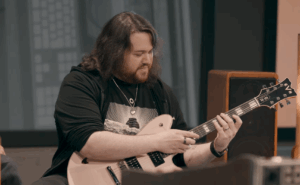Your Apple Device Has A Hidden “Diss” To The Beatles you Didn’t Know About

via The Beatles / YouTube
In 1968, The Beatles launched their own multimedia company, Apple Corps, intended as a creative hub for music, film, fashion, and other artistic pursuits. Its iconic green apple logo became a symbol of innovation and artistic freedom.
Several years later, in 1976, Steve Jobs and his co-founders established Apple Computer—known today as Apple Inc. It didn’t take long for the two Apples to recognize a trademark conflict. By 1981, they had reached a legal agreement: Apple Corps would remain outside the technology industry, while Apple Computer would steer clear of the music business.
But, as is often the case in the entertainment and tech industries, things didn’t remain that simple.
When Music Meets Technology
By the mid-1980s, Apple Computer had released the Macintosh, a personal computer with enhanced audio capabilities. At the same time, MIDI (Musical Instrument Digital Interface) was revolutionizing the music industry by bridging the gap between instruments and computers.
Apple Corps argued that Apple Computer had violated their 1981 agreement by entering the realm of digital music.
In 1991, the dispute reached the High Court in London, which ruled in favor of Apple Computer. The judge determined that the Mac was still primarily a data-processing tool, not a music production device.
That same year, a revised agreement was signed. Under the new terms, Apple Computer could use its name and logo for computers, telecommunications, and data-related products—but not for anything related to music. Apple Corps reportedly received $26.5 million in compensation.
Sosumi: A Quiet Act of Rebellion
In the early 1990s, a cheeky moment added humor to the ongoing legal tension. Apple needed a name for a new system alert sound for Mac computers. Jim Reekes, an Apple engineer, initially proposed “Let It Beep”—a pun on the Beatles’ song “Let It Be.” Unsurprisingly, the legal team rejected it due to potential copyright concerns.
In response, Reekes named the sound “sosumi,” claiming it was a Japanese word unrelated to music. In reality, it was a tongue-in-cheek jab—a play on the phrase “so sue me.”
The joke stuck. While the alert has since been renamed “Sonumi,” the original file, sosumi.aiff, still exists on Mac systems today.
Coming Full Circle
In 2003, Apple Inc. launched iTunes, a digital music platform that redefined how people buy and listen to music. Once again, Apple Corps filed a lawsuit, arguing that the new venture violated the 1991 agreement.
The legal battle dragged on until 2007, when a confidential settlement was finally reached. Apple Inc. reportedly paid around $500 million to acquire full rights to the Apple trademark.
Despite decades of disputes, The Beatles’ music eventually made its way to iTunes in 2010—bringing the long-running conflict to a poetic close.
Two Apples, One Legacy
After years of legal battles, each Apple carved out its place in history. One transformed the way we experience music through technology. The other preserved the legacy of the artists who helped shape modern music itself.
In the end, both Apples played a part in changing the world.












